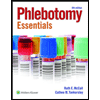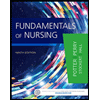
To discuss:
How do you think that you would respond in a similar situation? Why?
Case summary:
During the clinical rotation, the nurse met person FB who was an elderly man with a wound infection. He requires an intravenous antibiotic therapy. He was due for a certain antibiotic which has to be hung at 1000. When the nurse checked his drawer at 0800 and 0900, the antibiotic was not there. Another nurse told not to call pharmacy since the pharmacy staffs will replace the medication carts before the time. At 1000, the nurse found the medication bag in the drawer. It was found to be the right drug and the right dose, but it was the wrong patient. The label on the bag had another patient’s name on it. This patient was also in the same unit who is receiving the same drug and same dose but at a different time.
Explanation of Solution
In a similar situation, the nurse could not administer the medication as such to this patient. It is not the nurse’s legal right or responsibility to dispense the medication to the patient in this situation. The nurse would return the medication bags to the pharmacy since it was labeled with a wrong name. The nurse should call the pharmacy, explain the issue, and could request for a correct dose for this patient.
To discuss:
What does this tells about yourself and about the adequacy of your skills for professional practice?
Case summary:
During the clinical rotation, the nurse met person FB who was an elderly man with a wound infection. He requires an intravenous antibiotic therapy. He was due for a certain antibiotic which has to be hung at 1000. When the nurse checked his drawer at 0800 and 0900, the antibiotic was not there. Another nurse told not to call pharmacy since the pharmacy staffs will replace the medication carts before the time. At 1000, the nurse found the medication bag in the drawer. It was found to be the right drug and the right dose, but it was the wrong patient. The label on the bag had another patient’s name on it. This patient was also in the same unit who is receiving the same drug and same dose but at a different time.
Explanation of Solution
The nursing student might feel confident that she could be able to recognize and solve the problem. The professional legal skills are not quite adequate because the nursing student does not have the license yet. She is not quite as driven to protect it by knowing all the laws that are pertinent to nurses as the nursing student should be or will be.
To discuss:
Do you agree with the criteria to evaluate a successful outcome?
Case summary:
During the clinical rotation, the nurse met person FB who was an elderly man with a wound infection. He requires an intravenous antibiotic therapy. He was due for a certain antibiotic which has to be hung at 1000. When the nurse checked his drawer at 0800 and 0900, the antibiotic was not there. Another nurse told not to call pharmacy since the pharmacy staffs will replace the medication carts before the time. At 1000, the nurse found the medication bag in the drawer. It was found to be the right drug and the right dose, but it was the wrong patient. The label on the bag had another patient’s name on it. This patient was also in the same unit who is receiving the same drug and same dose but at a different time.
Explanation of Solution
The criteria which are provided in the scenario are agreeable. To evaluate a successful outcome; the right patient should receive the right drug, at the right dose and at the right time. This should be carried out in the right route of administration, along with the right documentation and understanding the right rationale. The patient must be safe and comfortable with the drug which is being administered to him.
To discuss:
Did the nursing student validate the rationale for the outcome?
Case summary:
During the clinical rotation, the nurse met person FB who was an elderly man with a wound infection. He requires an intravenous antibiotic therapy. He was due for a certain antibiotic which has to be hung at 1000. When the nurse checked his drawer at 0800 and 0900, the antibiotic was not there. Another nurse told not to call pharmacy since the pharmacy staffs will replace the medication carts before the time. At 1000, the nurse found the medication bag in the drawer. It was found to be the right drug and the right dose, but it was the wrong patient. The label on the bag had another patient’s name on it. This patient was also in the same unit who is receiving the same drug and same dose but at a different time.
Explanation of Solution
The nursing student has found to validate the rationale for the outcome. Validating the right reason requires the nursing student to understand the rationale for the drug administration. The right documentation and the right response are the important rationales for the successful outcome of the drug administration.
To discuss:
What knowledge, skills, and attitudes does the nursing student need to develop to continuously improve the quality and safety of care for patients like Mr. B?
Case summary:
During the clinical rotation, the nurse met person FB who was an elderly man with a wound infection. He requires an intravenous antibiotic therapy. He was due for a certain antibiotic which has to be hung at 1000. When the nurse checked his drawer at 0800 and 0900, the antibiotic was not there. Another nurse told not to call pharmacy since the pharmacy staffs will replace the medication carts before the time. At 1000, the nurse found the medication bag in the drawer. It was found to be the right drug and the right dose, but it was the wrong patient. The label on the bag had another patient’s name on it. This patient was also in the same unit who is receiving the same drug and same dose but at a different time.
Explanation of Solution
The nursing student should learn to triple-check the medication labels to avoid medication errors. The nursing student should be careful to avoid mistakes. The nursing student must make sure whether both the patients have the medications available to them when they are due for it. Under uncertain situations, the nursing student should always seek help from the senior nurse or preceptor.
Want to see more full solutions like this?
- • Define the first stage of labour. • Describe the physiology of the first stage of labour. • Enumerate any four (4) potential complications during puerperium and highlight key measures to manage these complications.arrow_forward• Define obstetric emergencies and state and briefly explain any two (2) maternal, foetal, and obstetric complications that require immediate intervention. • Explain how mental health services can be effectively integrated into maternal and child health, viz-a-viz early childhood development. • Enumerate any four (4) foetal malpresentations in pregnancy and briefly explain their implication in labour while also highlighting their causes and possible complications.arrow_forward• Briefly highlight the physiological changes in pregnancy in relation to cardiovascular and endocrine systems, as well as the uterus and the skin. • Discuss the current antenatal care approach for pregnant women and provide the highlight of activities conducted during woman’s antenatal visit, clearly describing the steps needed for successful antenatal care. • Enumerate any three (3) abnormalities related to placental development and their implications to pregnancy or childbirth.arrow_forward
- 58 64. Rhythm: Clues: Rhythm: Clues: 62 Rhythm QRS Complex Rates PRI Interpretation Rhythm: P wave QRS Complex Rate PRI Interpretation Rhythm: Clues: Rhythm P wave: QRS Complex Rate PRI Interpretation: Rhythm: P wave: QRS Complex: Rate: Interpretation: 67 Rhythm: P wave: QRS Complex: Rate: PRI Interpretation: Rhythm: P wave: QRS Complex: Rate: PRI Interpretation: 68 Rhythm P waves QRS Complex Rate PRI Interpretation Rhythm P wave QRS Complex Rhythm: P wave QRS Complex: Rate PRI Interpretations Rate PRI Interpretationarrow_forward51. 52. 53. Rhythm: Clues: Rhythm: Clues: Rhythm: Clues:arrow_forwardRegularity- Rate- P waves- PRI- QRS- Interpretation- atrial dysrthmia,junctional dysrthymia,and ventricular rhythm,heart blocks,normal sinus,PVCarrow_forward
- normal sinus,atrial dysrthmia,junctional dysrthymia,and ventricular rhythm,heart blocks,PVCarrow_forwardnormal sinus,atrial dysrthmia,junctional dysrthymia,and ventricular rhythm,heart blocksarrow_forwardA 40-year-old male farmer was rushed to an ER with complaints of fever, abdominal pain/tenderness, nausea and vomiting. Clinical examination and investigations revealed diagnosis of typhoid perforation and he was booked for exploratory laparotomy. Explain in detail the pre - operative care of this patient.arrow_forward
- As a nursing student wanting to do preceptorship at ICU or ER, answer the following question: Why are you requesting this site? How will this unit meet your learning needs?How will this unit contribute to your professional goals?arrow_forwardAs a nursing student wanting to do preceptorship at the cancer clinic. Answer the following question. Why are you requesting this unit? How will this site meet your learning needs? How will this unit contribute to your professional goals?arrow_forward40. Rhythm (regular or irregular):. Rate: P wave: PR interval: QRS: Interpretation:arrow_forward
 Phlebotomy EssentialsNursingISBN:9781451194524Author:Ruth McCall, Cathee M. Tankersley MT(ASCP)Publisher:JONES+BARTLETT PUBLISHERS, INC.
Phlebotomy EssentialsNursingISBN:9781451194524Author:Ruth McCall, Cathee M. Tankersley MT(ASCP)Publisher:JONES+BARTLETT PUBLISHERS, INC. Gould's Pathophysiology for the Health Profession...NursingISBN:9780323414425Author:Robert J Hubert BSPublisher:Saunders
Gould's Pathophysiology for the Health Profession...NursingISBN:9780323414425Author:Robert J Hubert BSPublisher:Saunders Fundamentals Of NursingNursingISBN:9781496362179Author:Taylor, Carol (carol R.), LYNN, Pamela (pamela Barbara), Bartlett, Jennifer L.Publisher:Wolters Kluwer,
Fundamentals Of NursingNursingISBN:9781496362179Author:Taylor, Carol (carol R.), LYNN, Pamela (pamela Barbara), Bartlett, Jennifer L.Publisher:Wolters Kluwer, Fundamentals of Nursing, 9eNursingISBN:9780323327404Author:Patricia A. Potter RN MSN PhD FAAN, Anne Griffin Perry RN EdD FAAN, Patricia Stockert RN BSN MS PhD, Amy Hall RN BSN MS PhD CNEPublisher:Elsevier Science
Fundamentals of Nursing, 9eNursingISBN:9780323327404Author:Patricia A. Potter RN MSN PhD FAAN, Anne Griffin Perry RN EdD FAAN, Patricia Stockert RN BSN MS PhD, Amy Hall RN BSN MS PhD CNEPublisher:Elsevier Science Study Guide for Gould's Pathophysiology for the H...NursingISBN:9780323414142Author:Hubert BS, Robert J; VanMeter PhD, Karin C.Publisher:Saunders
Study Guide for Gould's Pathophysiology for the H...NursingISBN:9780323414142Author:Hubert BS, Robert J; VanMeter PhD, Karin C.Publisher:Saunders Issues and Ethics in the Helping Professions (Min...NursingISBN:9781337406291Author:Gerald Corey, Marianne Schneider Corey, Cindy CoreyPublisher:Cengage Learning
Issues and Ethics in the Helping Professions (Min...NursingISBN:9781337406291Author:Gerald Corey, Marianne Schneider Corey, Cindy CoreyPublisher:Cengage Learning





